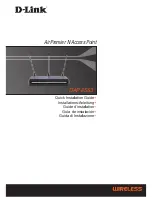
85
Cisco Aironet Series 2700/3700 Access Points Deployment Guide
Misc. Q & A
Q.
Can industrial wireless motion or smoke detectors cause WLAN interference?
A.
Yes, some products such as United Technologies DD475 and Optex MX-50 operate in the 2.4 GHz
band as do other wireless “chimes”, cameras, and other industrial equipment from other
manufacturers.
Q.
How much power in Watts does the AP 3600 draw when an option module is used?
A.
18 Watts – AP 3600 draws slightly more than 802.3af (15.4W) with the module installed. Powering
options include 802.3at PoE+, local Power Supply AIR-PWR-B, or injector AIR-PWR-INJ4. If
performing Surveys or 2.4 GHz support is not needed, that radio may be disabled allowing the
module to have full power and functionality using 802.3af (15.4 Watts).
Q.
What is the Ethernet requirement for 802.11ac (Wave-1)?
A.
A single GbE cable is fine for Wave-1. While it is true 802.11ac (Wave-2) will exceed GbE speeds,
there is no need or requirement for cabling greater then GbE for 802.11ac Wave-1. Installers wishing
to future proof new installations should consider pulling CAT-6a cables <at least 1> and either
another CAT6a or a CAT5e cable (this allows you to fall back to 2 GbE ports) for some iterations of
Wave-2 and/or support 10GbE should this emerge as the method. 10GbE has some challenges such
as PoE standardization. Again, for the foreseeable future, a single GbE is all that is needed.
Q.
Is it true that 802.11ac is coming in “waves” and that new hardware is required for each “wave”?
A.
The first iteration of 802.11ac (Wave-1) is available today, and both Wave-1 and Wave-2 requires
new hardware to take advantage of the new features in each “wave” or iteration. Fortunately, with a
modular AP approach such as the AP 3600, upgrading to Wave-1 today is easy. Also, unlike the
competition, both the AP 3600 and newer Cisco Access Points such as the AP 3700 with modular
support will make upgrading to Wave-2 a painless process without having to perform a complete rip
and replace.
Q.
With the 802.11ac Module installed in the AP3600, will all 3 radios be active?
A.
Yes. All 3 radios will be active
The 2.4 GHz radio continues to support legacy b/g clients as well as n clients. The two 5 GHz radios
(inte module) will work in tandem so they are not competing with each other but working
in concert to support the same channels. For instance:
•
The 802.11ac module adopts an 80 MHz wide channel on 100-104-108-112.
•
The 802.11a/n integrated radio operates on Channels 100-104 and a 40 MHz wide channel for
802.11n clients, and 802.11a clients communicate with the integrated radio via Channel 100 and
a 20 MHz wide channel.
The AP 3600 with the new 802.11ac module installed, will provide concurrent support for both the
2.4 and 5 GHz bands and support for 802.11 a, b, g, n, and new 802.11ac clients.
Note
On the 5 GHz side, it is possible to have a 20 MHz wide 11ac channel and a 40 MHz wide 11n channel,
the only requirement is that the primary channel should be the same for both slots and is determined by
the primary channel setting on the integrated 11n radio.
Q.
Can both 5 GHz radios (integrated and 802.11ac module) be on different channels?
A.
No. The two 5 GHz radios will work together on the same channels, which does not allow the 5 GHz
radios to compete with each other and allows us to maximize the number of clients supported per
radio. The primary (integrated .11n) radio will take the lead with the module radio “extending” or
bonding from the primary channel set on the integrated radio.




































